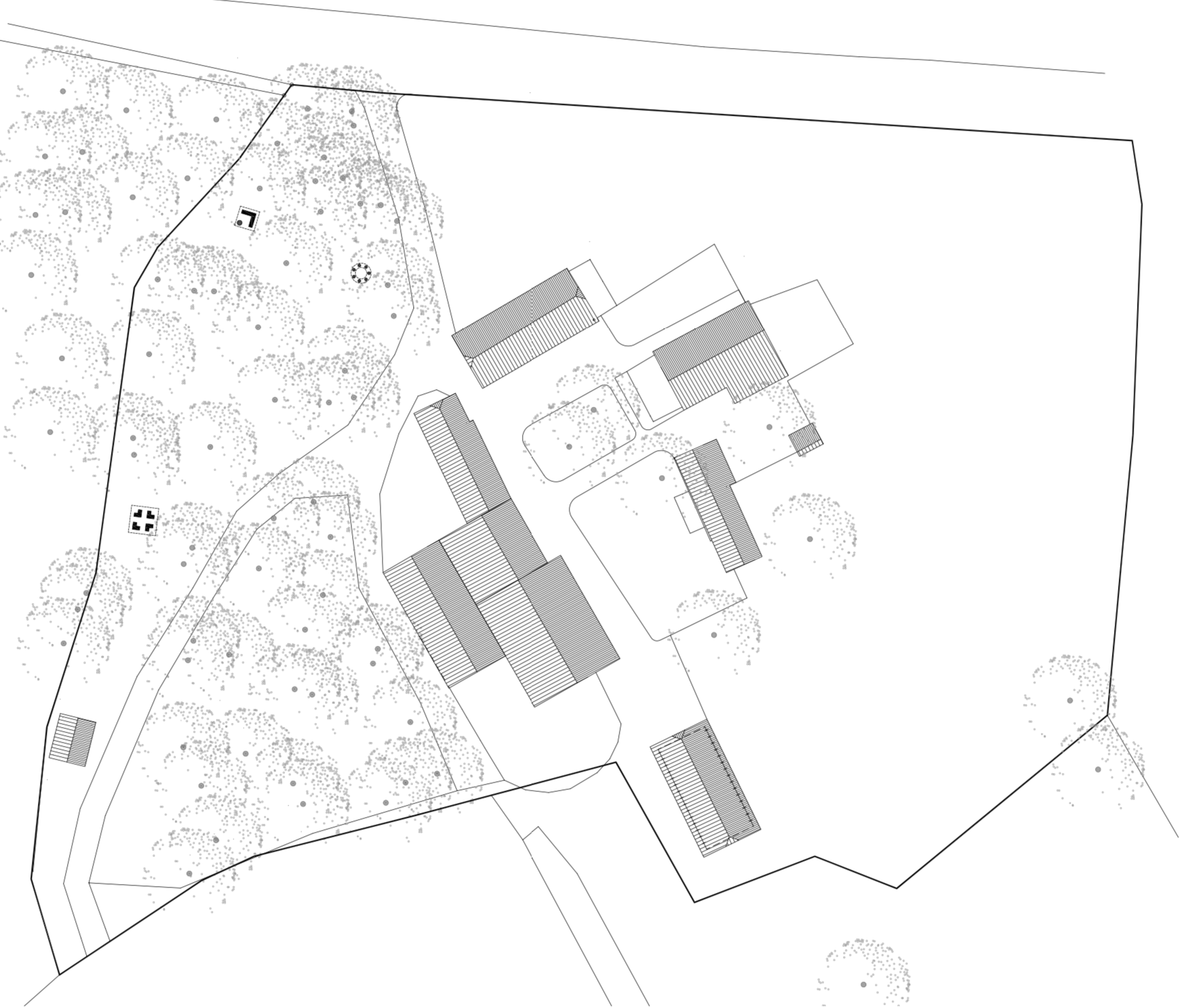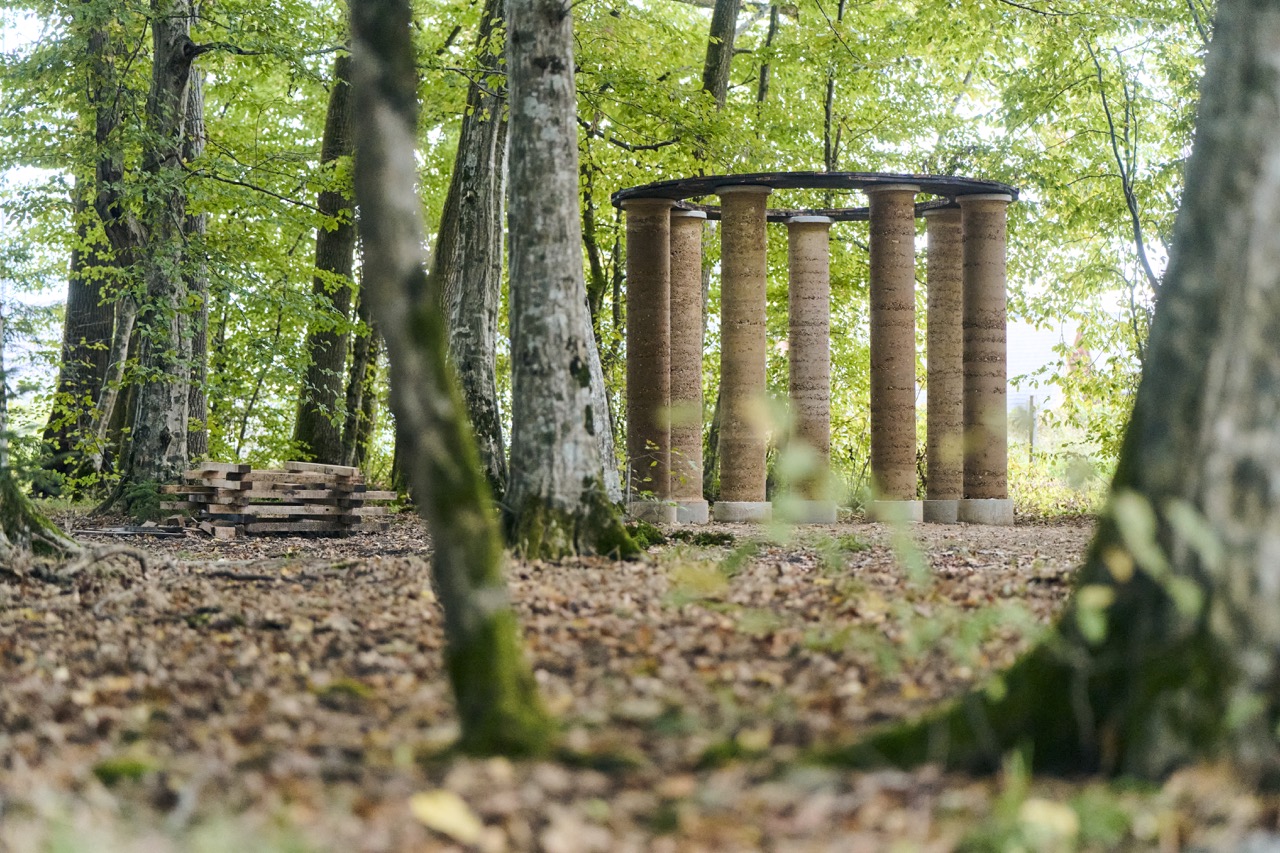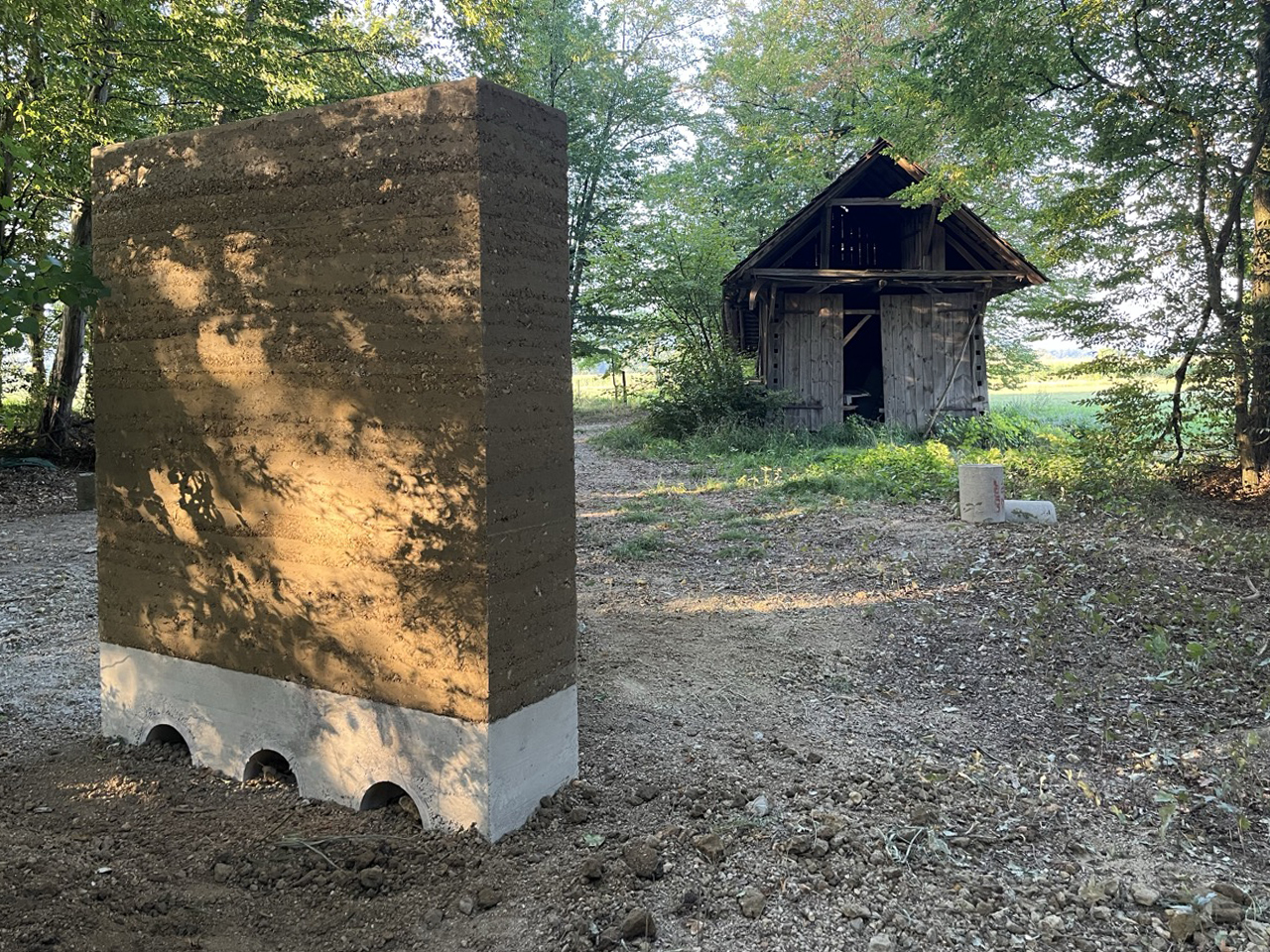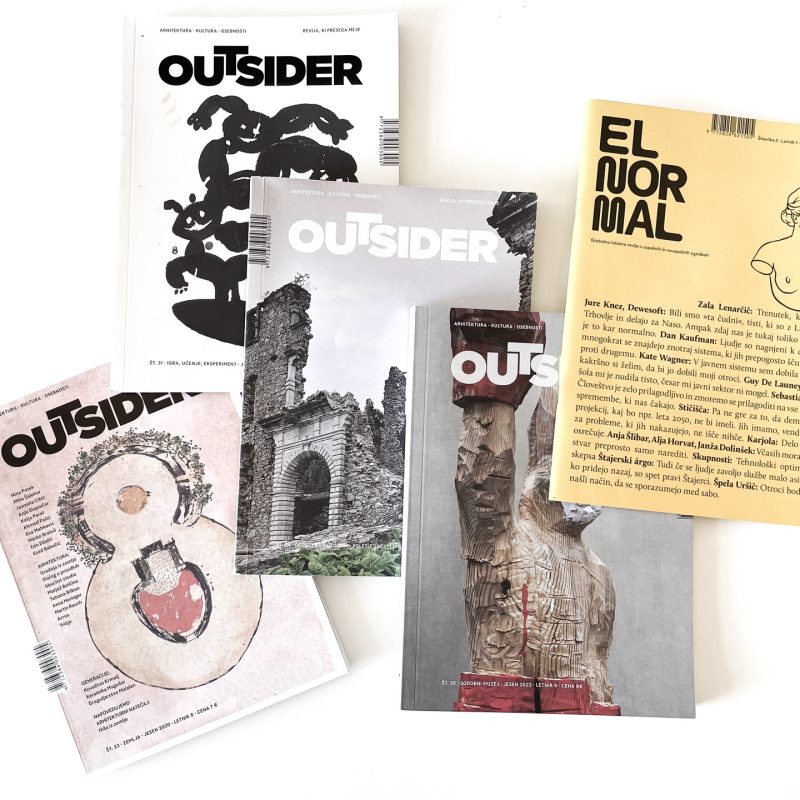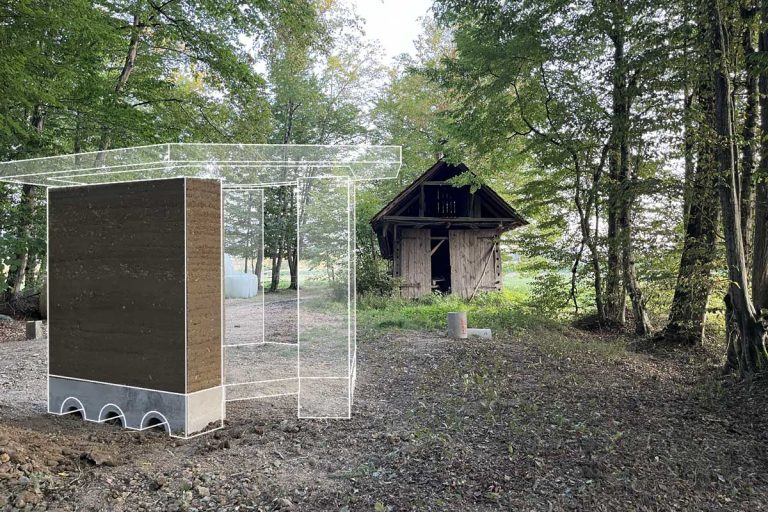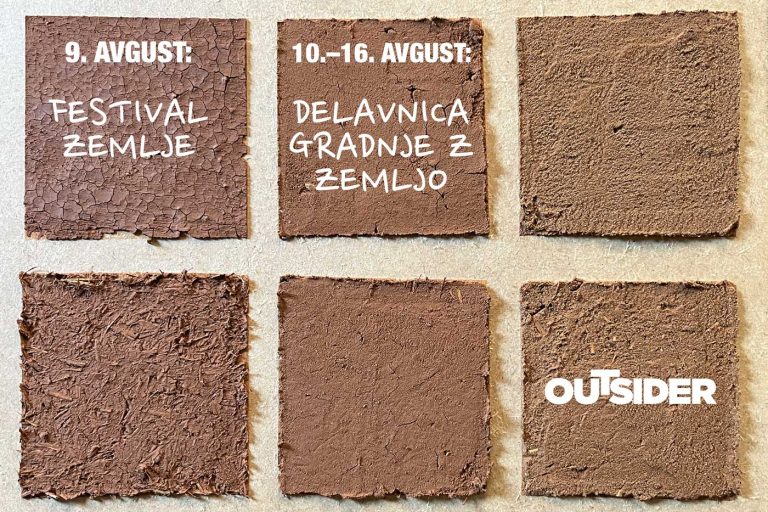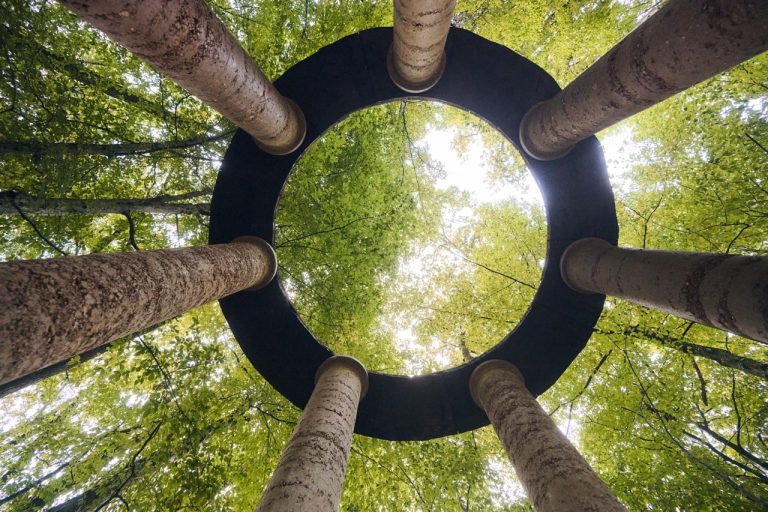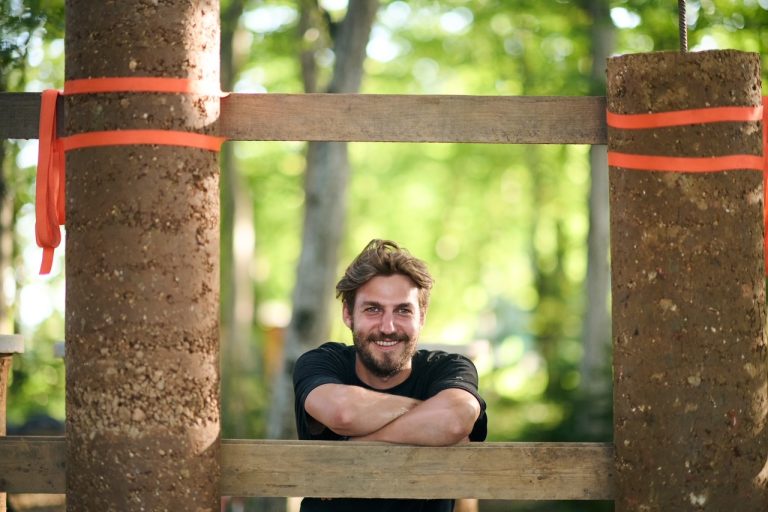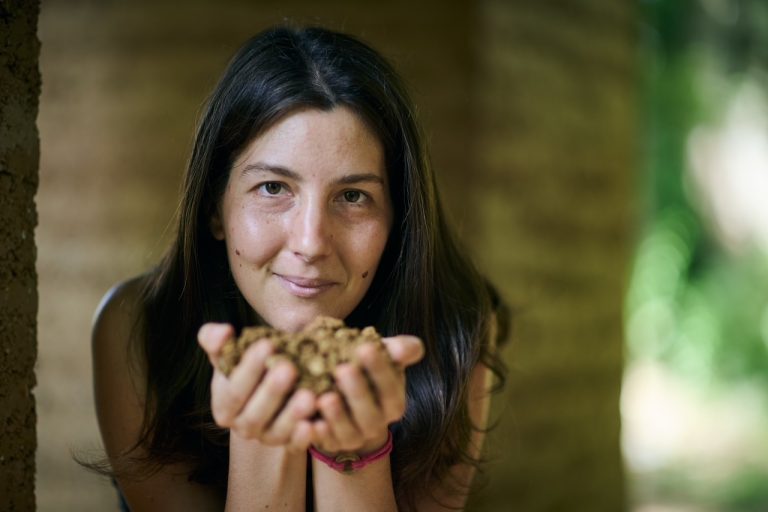Outsider Magazine has been following sustainable building practices since its very beginning in 2015. One of these practices is earth construction. When, in 2018, we invited Martin Rauch—the pioneer of contemporary earth building—to our festival Tools for Better Living, he inspired us to take up earth construction in practice as well. This was followed by an internationally acclaimed competition for an earthen house, to which we received 469 submissions from all over the world. In 2021, we organized our first workshop, establishing a site that today serves as the Center for Earth Building. In 2022, we ran five workshops; in 2023, eleven. In 2024 we have organized six. Our work and research is work in progress. In 2025 we are building a new pavilion.
Why build with earth?
Earth construction is an archaic technique that, after many years of neglect, is finding its way back into contemporary architecture. Much of this revival is thanks to Martin Rauch, who for more than 30 years has been researching, refining, and promoting the techniques and benefits of earth. In collaboration with architects such as Roger Boltshauser, Anna Heringer, and Herzog & de Meuron, he has built numerous acclaimed projects that have set benchmarks for new approaches in architecture.
As a result, earthen construction is becoming increasingly widespread in Austria, Germany, France, Spain—and also here. The advantages are many. First, earth has the lowest carbon footprint of all building materials, which is becoming a decisive factor in the context of global warming. Second, earth is universally available—even as construction waste. Excavations for foundations and infrastructure works produce vast amounts of soil that is usually deposited as non-hazardous construction waste. This material could be used to create high-quality, ecological, and more affordable homes. Third, earth has excellent properties for indoor climate: it regulates humidity, stores heat, and absorbs harmful substances from the air. It is a material that creates a healthy living environment.
Building community
Through experimental construction, we also discover other, less obvious advantages. Building with earth is also building community. Earth attracts people and binds them together through shared work. More than 150 participants have already taken part in our workshops. Earth has created inspiring relationships. Part of our research process is to understand how this connective power of earth could be applied in public space—as a tool for better living.
Play
Our experimental building takes place on two levels. The first is scientific: improving the properties of earth mixtures and measuring their physical qualities.
The second is intuitive. This is the central method at our summer workshops. It involves testing building techniques, formwork, and earth mixtures, while experimenting with different architectural concepts. In a way, we are rediscovering the alphabet of architecture.
In these experiments we draw on the philosophy of Dutch historian and cultural theorist Johan Huizinga, who in his 1938 book Homo Ludens explored the importance of play in culture and society. Huizinga argued that play is the foundation and necessary precondition for the emergence of culture.
Doubt
A crucial element of both scientific and intuitive research is doubt. Constantly questioning our results drives us forward. Doubt may concern individual steps of the process—or the processes themselves. It is sometimes frustrating, but it forces us to reflect on how things might be done better. And when we improve a technique, a mixture, or even the concept itself, doubt pays off.
Beauty
Beauty is a neglected category in contemporary architecture, usually regarded only as a by-product of a well-designed functional diagram. In our case, beauty is the guiding principle. As long as our experiments inspire us with beauty, we know we are on the right path.
Oracles
When we build small pavilions, we return to simple, archaic principles of construction. We deconstruct architecture into its basic elements—wall, corner, column, space—and build from there. These pavilions are small architectures without a function dictating their form. Their only purpose is learning and relating to the environment. Through these primal processes of building, our discourse becomes timeless. We question the technologies that underpin culture, and the spirituality that has always been interwoven with human materializations. In doing so, we found parallels with ancient oracles. These once offered answers about the future—and earth building may well be one of them.
Written by: Matevž Granda
Photography: Jana Jocif
 Earthen Oracles
Earthen Oracles
2022 – Learning through Mistakes
2023 – A Modular System of Earth Construction
2024 – The Earthen Colonnad

The Colonnade
How tall and how slender can we build with earth? This was one of the starting questions for this year’s pavilion. Another was how various additives could improve the earth mixture. We chose round-section columns, as they have no corners and their surface is evenly exposed to climatic influences. The diameter of a column is only 30 cm. Such a column is stable up to a height of about one meter—but we wanted to go higher. We therefore reinforced the core with steel rebars. At two meters, the columns are stable and strong. Seven columns were built over seven days. We added coconut fibers to the mixture, which nearly doubled its compressive strength.
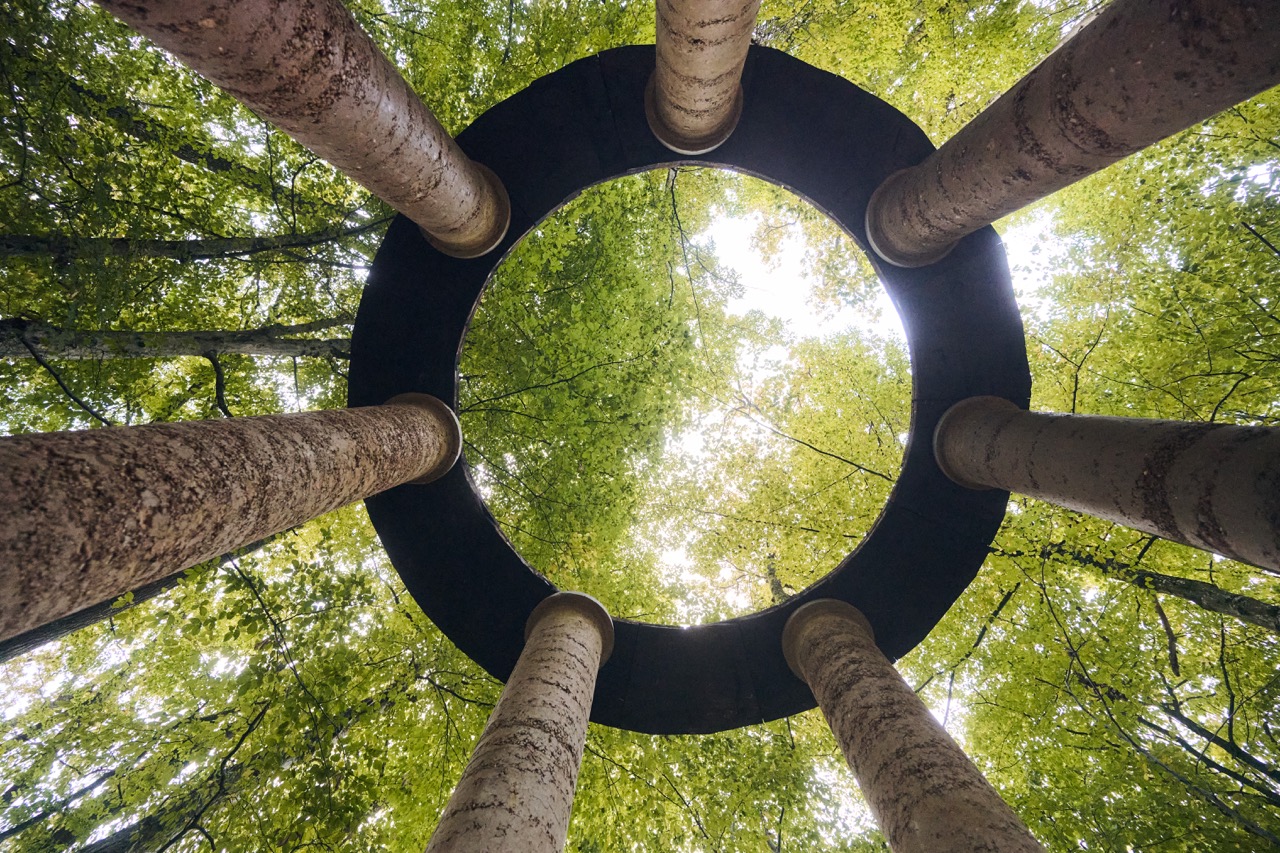
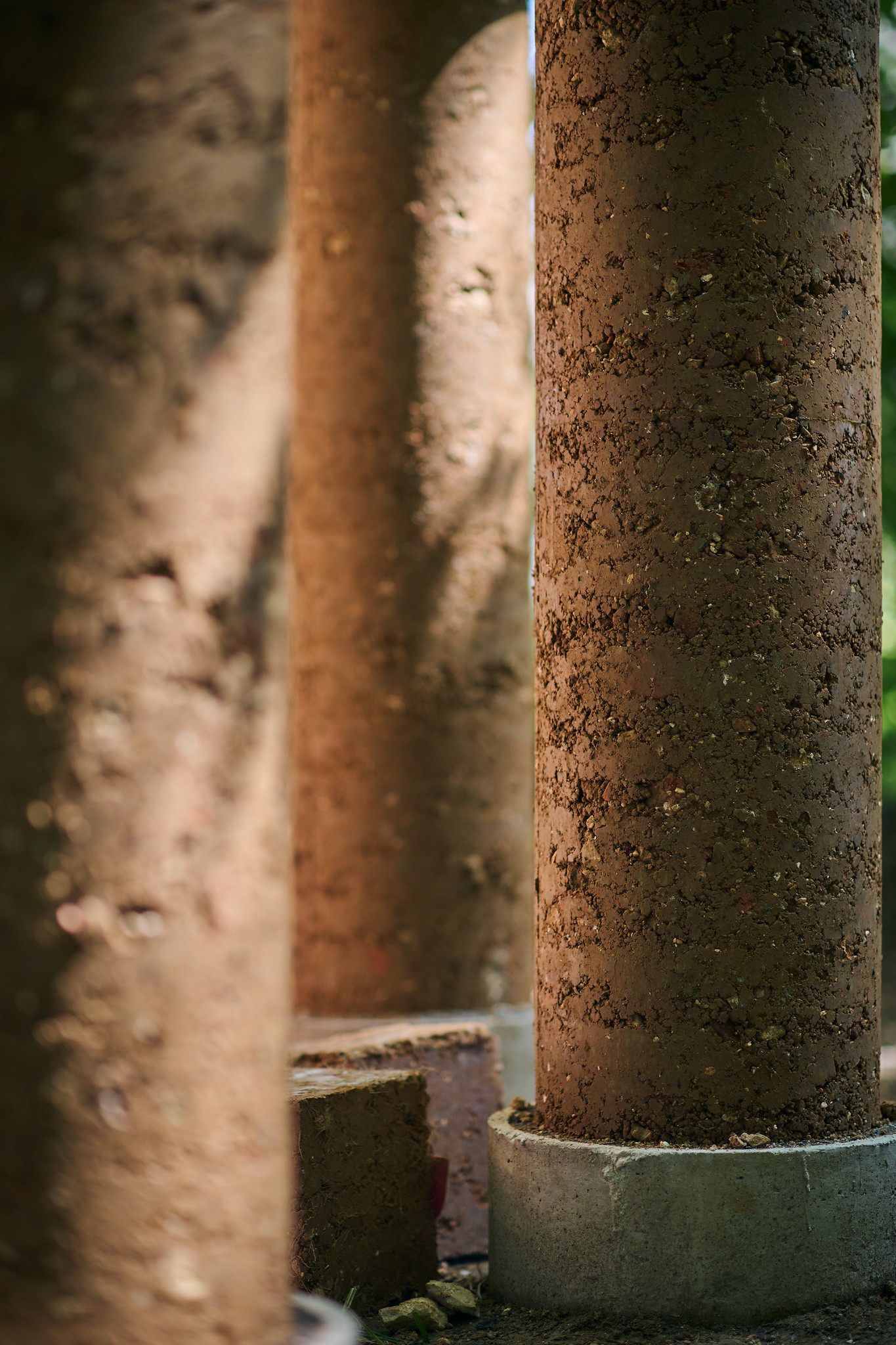
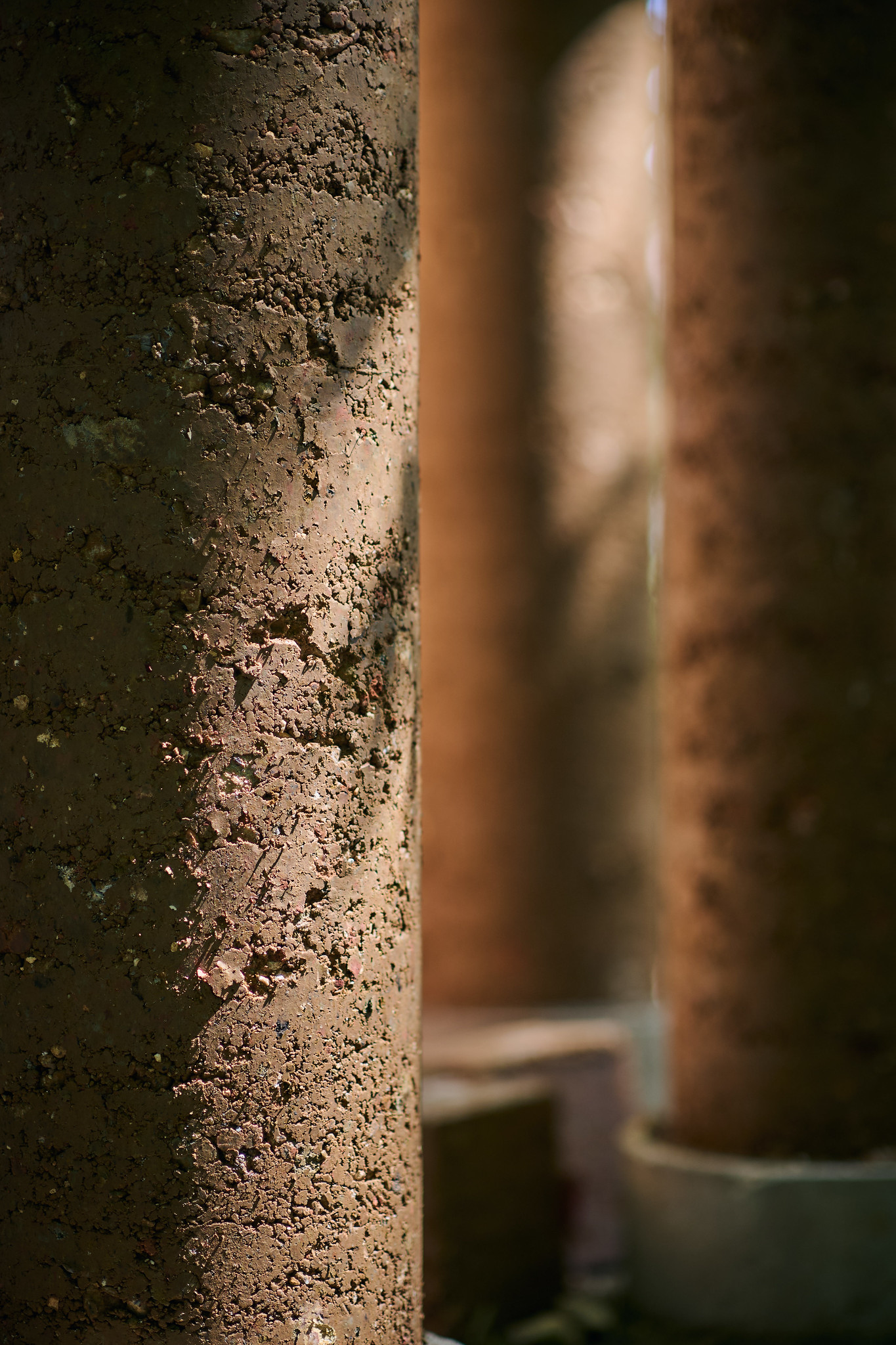
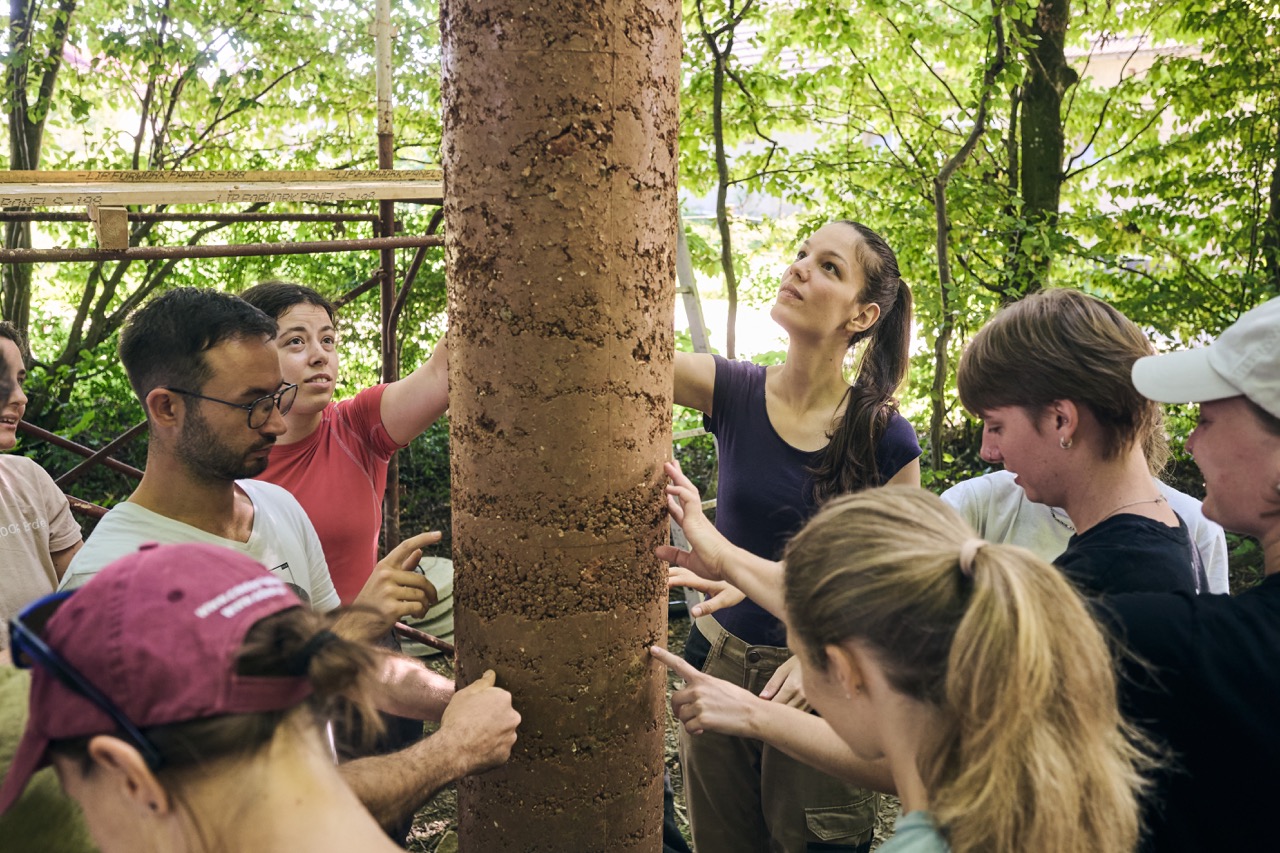
The Modular System
Based on the experience gained from building our first pavilion, in 2023 we decided to systematize the process. We developed a corner formwork, which we refined and improved over four iterations. We optimized the preparation of the earth mixture and tested pneumatic ramming tools. Construction became significantly faster. At the same time, we began developing a modular architectural system to bring earth building closer to everyday use. This system was tested in a summer student workshop, which produced ten projects—each addressing contemporary housing and environmental needs with its own architectural approach. The development of the modular system continues.
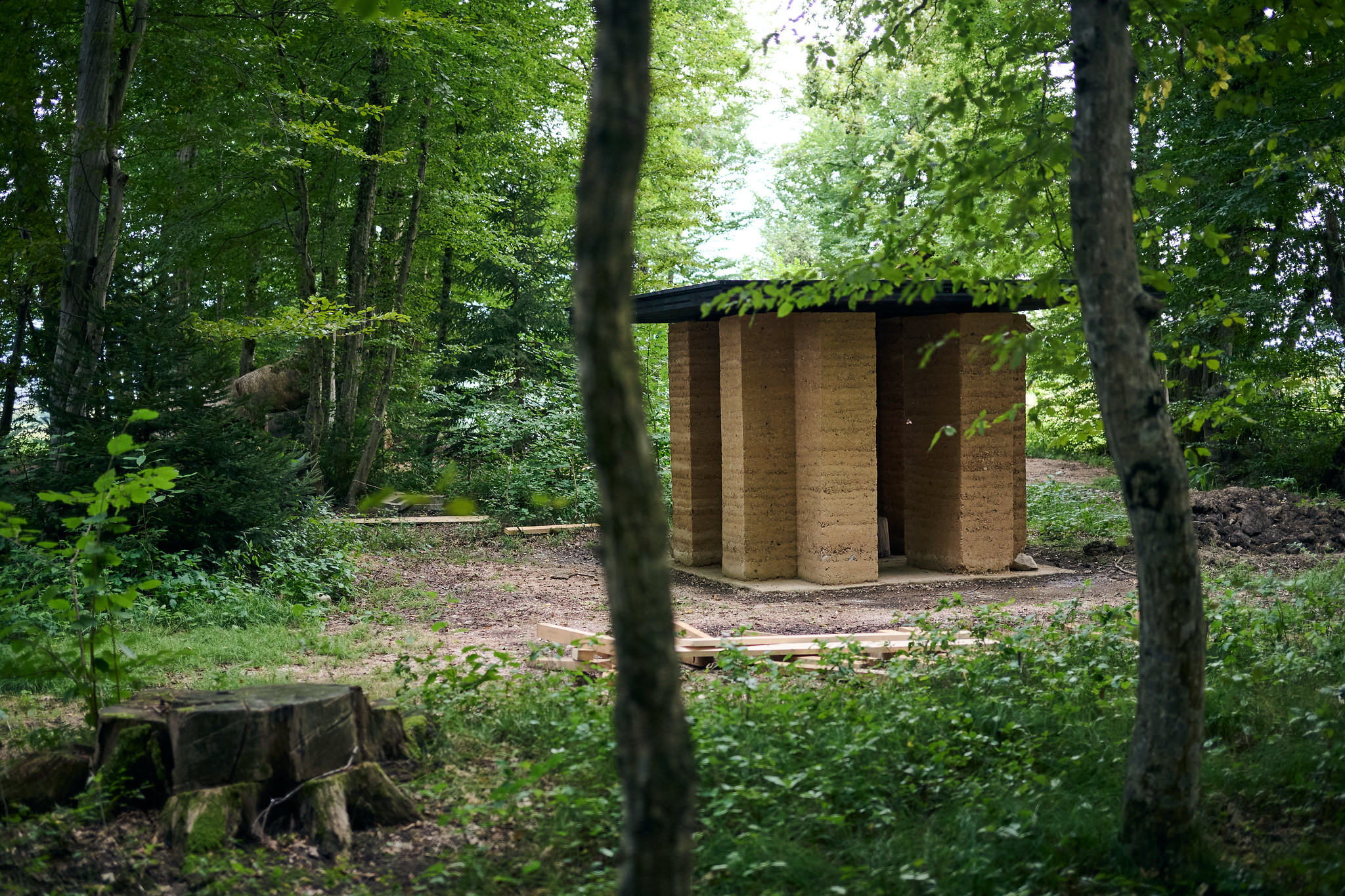
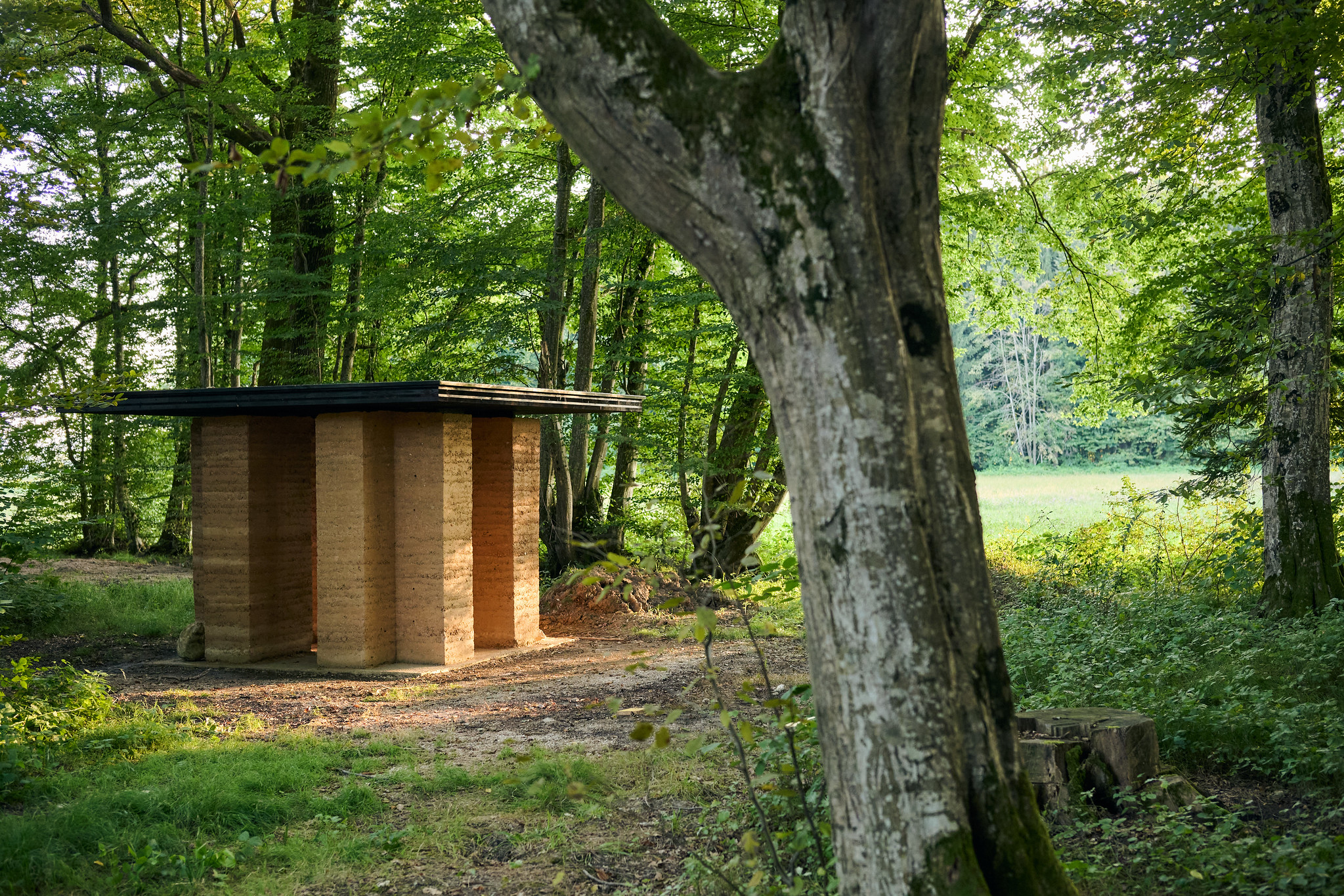

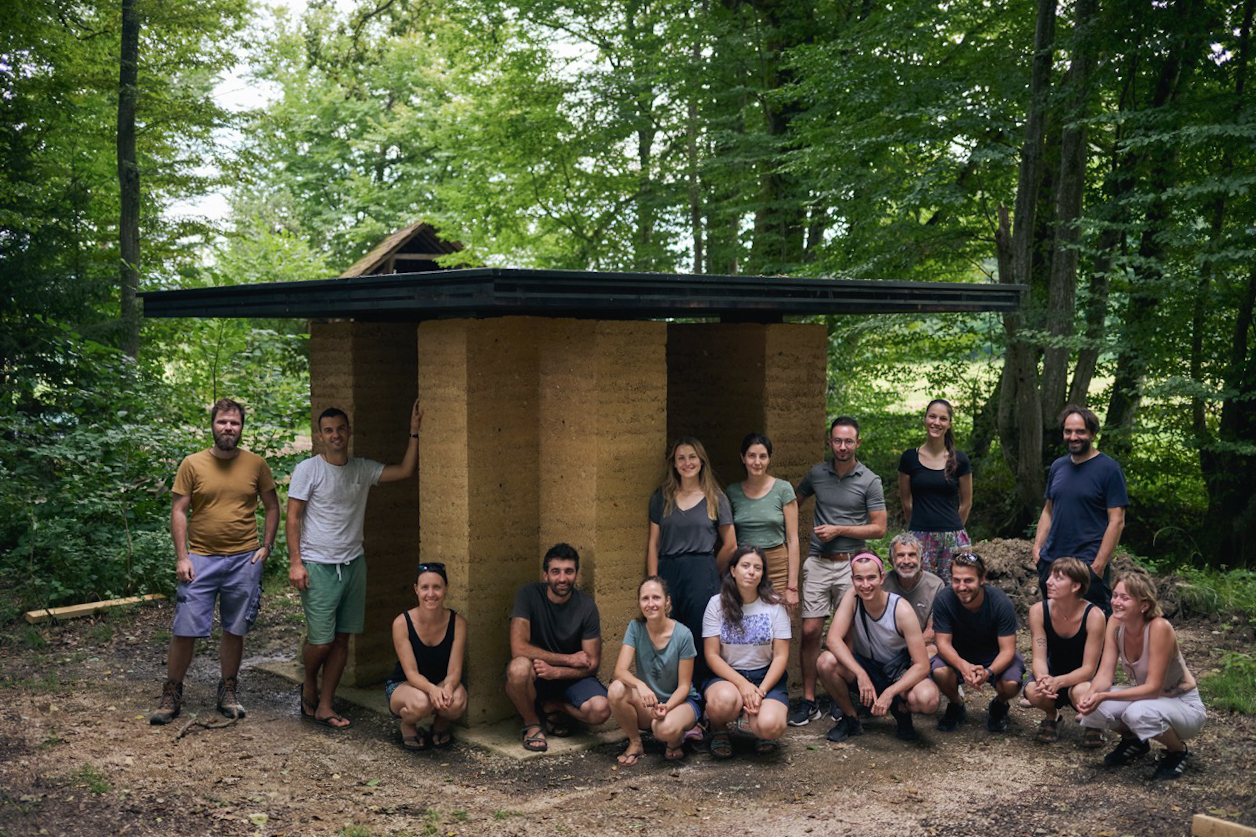
Learning through Mistakes
Our first pavilion was built in 2022. Before starting construction and getting our hands dirty, we read numerous books and theoretical discussions. But only practical work raised the right questions: How do you know when the mixture is right? When is it compact enough? How do you place it to ensure durability? From the outset, we allowed ourselves the possibility of mistakes—on the condition that we would learn from them. First, in one week, we built a bench up to half a meter high. We tested various mixtures and with the optimal one reached one meter in the next two days. For comparison, we also purchased a DIN-standard mixture, which we used to complete the wall up to two meters. The wall today bears memories of the mistakes we made—and the repairs we learned to implement.
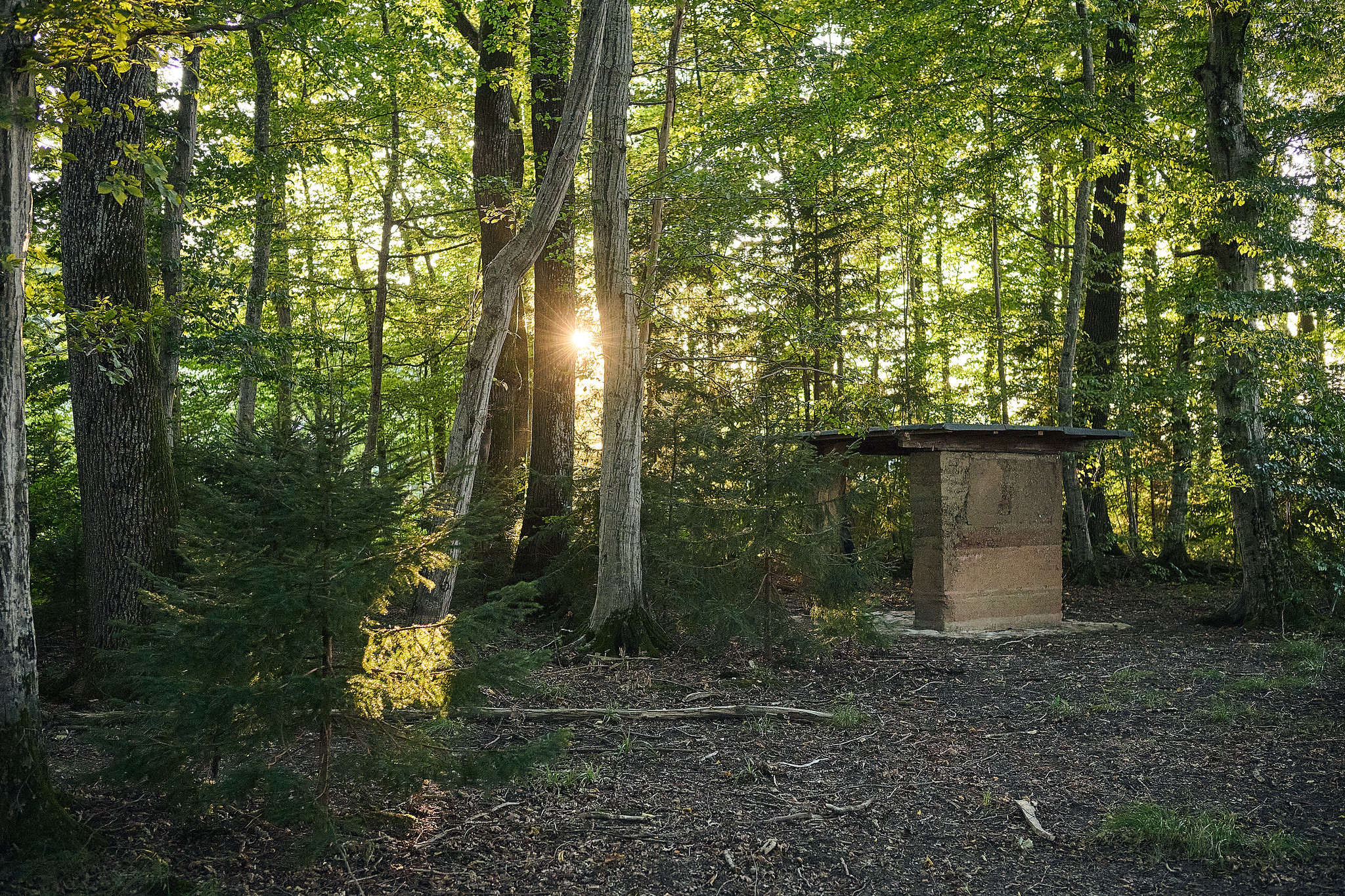
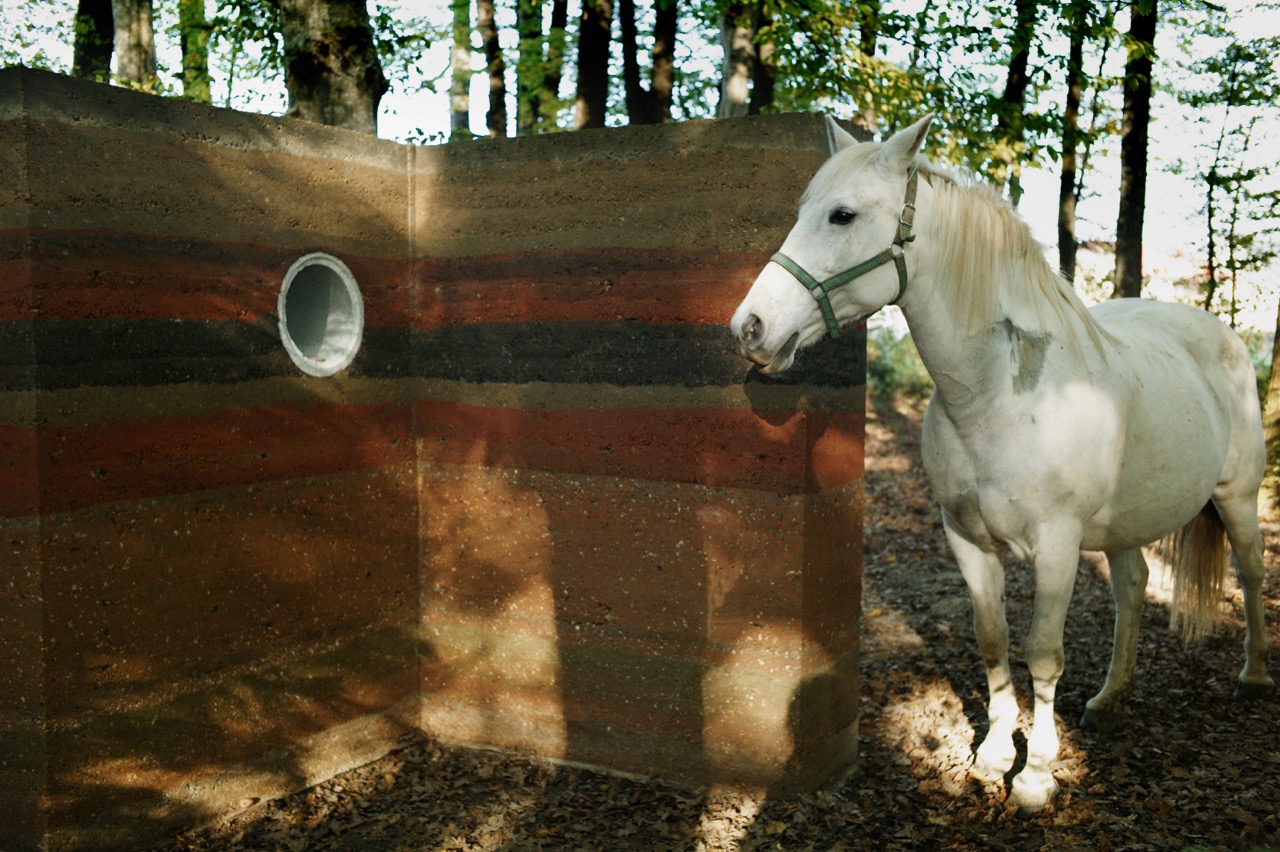
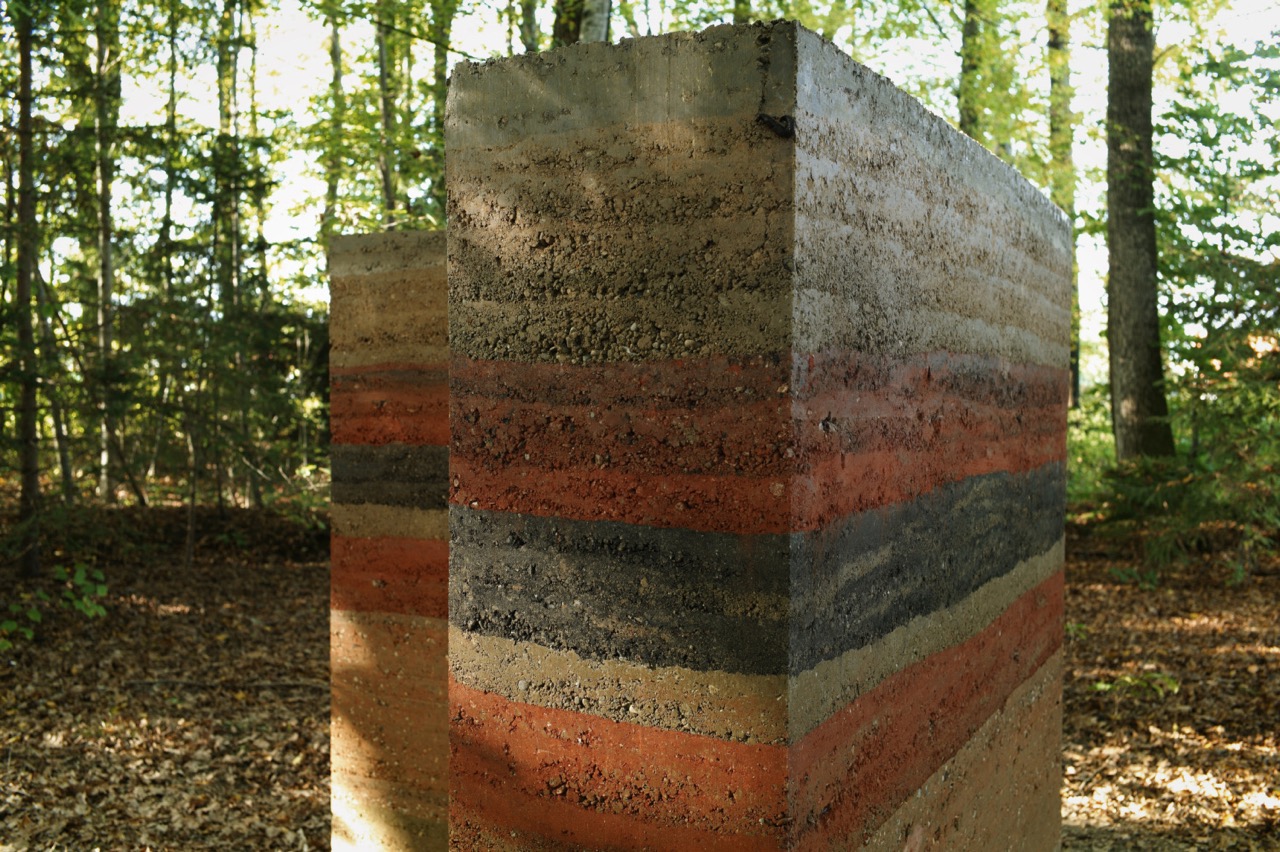
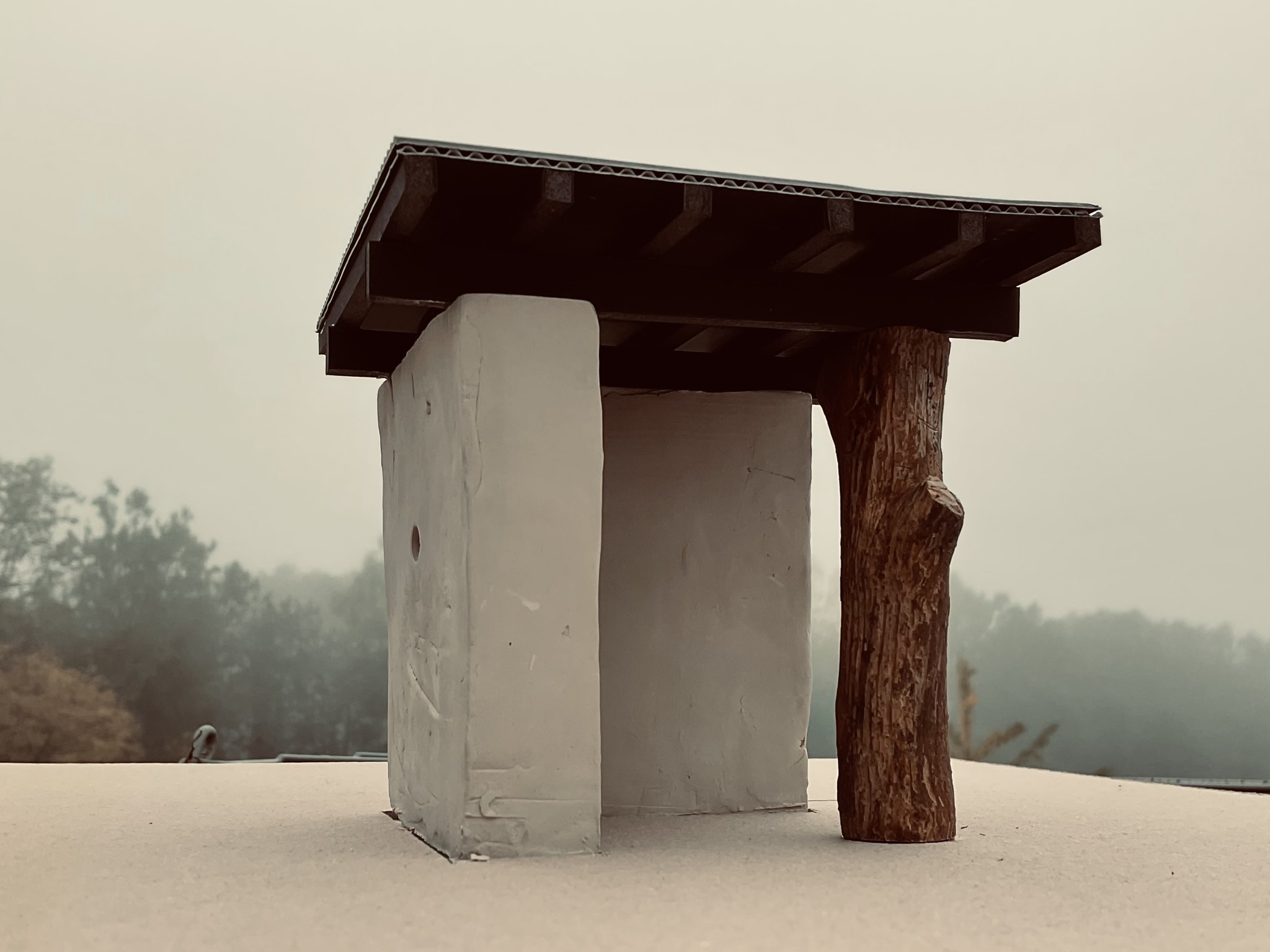
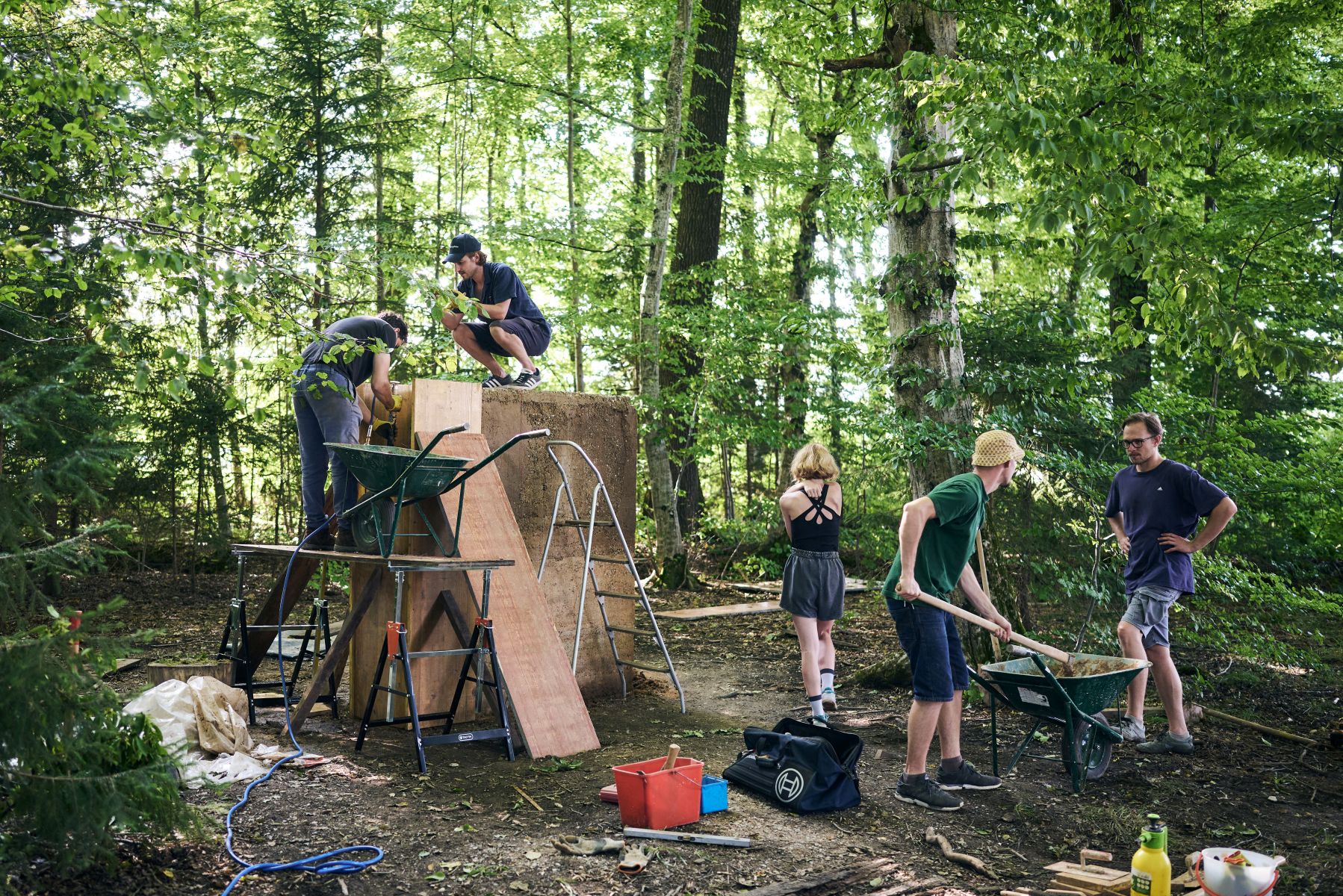
New pavilion will be build in 2025.



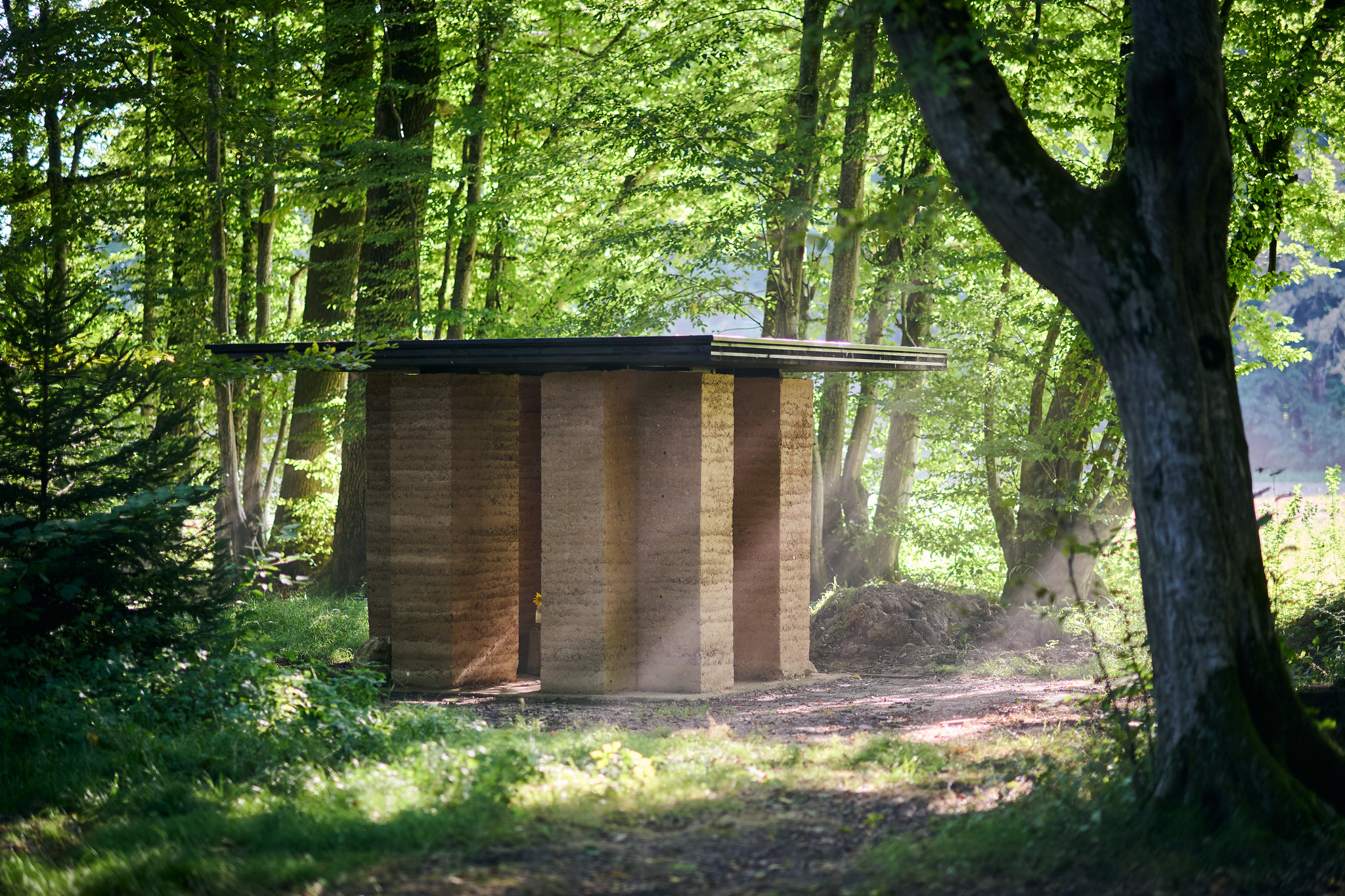
 Earthen Oracles
Earthen Oracles